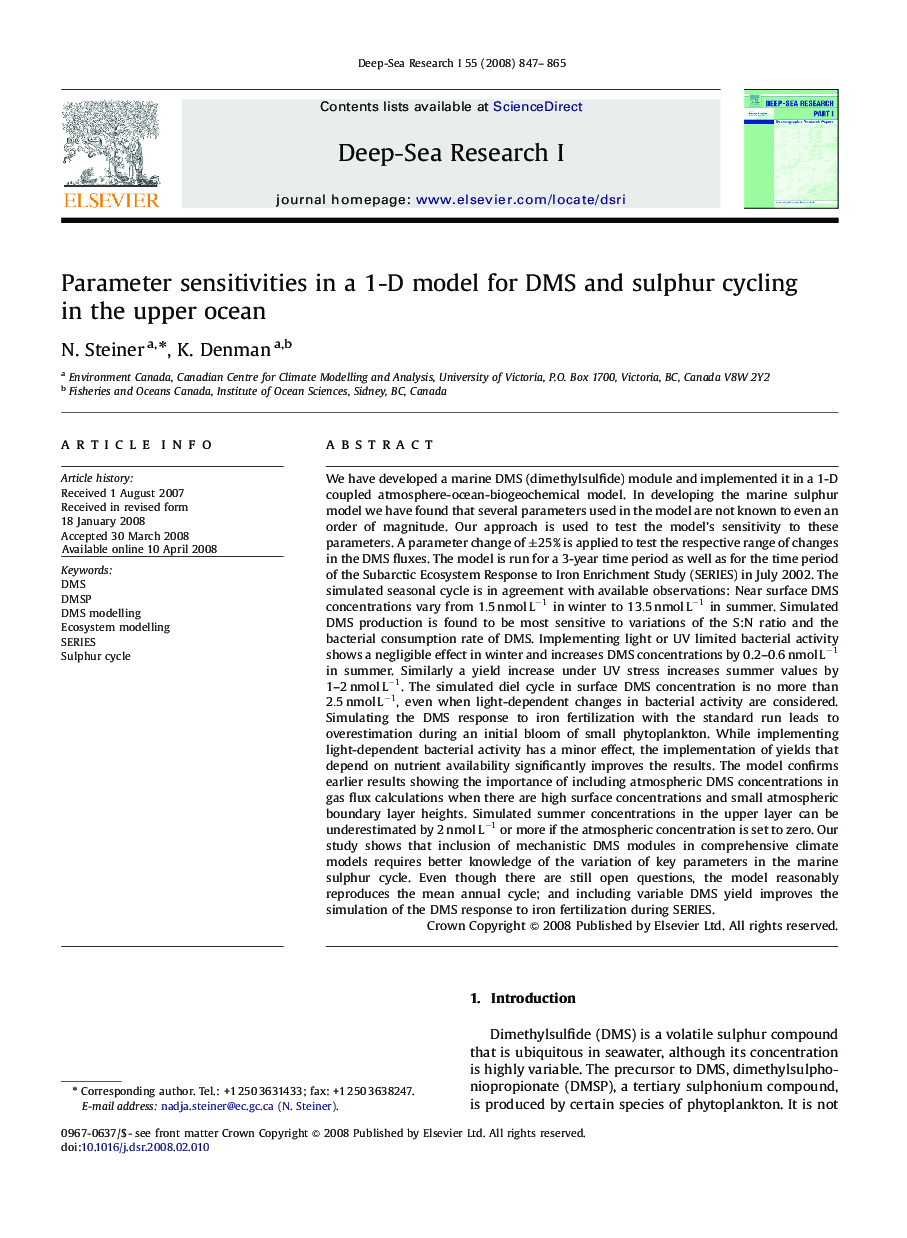| Article ID | Journal | Published Year | Pages | File Type |
|---|---|---|---|---|
| 4535298 | Deep Sea Research Part I: Oceanographic Research Papers | 2008 | 19 Pages |
We have developed a marine DMS (dimethylsulfide) module and implemented it in a 1-D coupled atmosphere-ocean-biogeochemical model. In developing the marine sulphur model we have found that several parameters used in the model are not known to even an order of magnitude. Our approach is used to test the model's sensitivity to these parameters. A parameter change of ±25%±25% is applied to test the respective range of changes in the DMS fluxes. The model is run for a 3-year time period as well as for the time period of the Subarctic Ecosystem Response to Iron Enrichment Study (SERIES) in July 2002. The simulated seasonal cycle is in agreement with available observations: Near surface DMS concentrations vary from 1.5nmolL-1 in winter to 13.5nmolL-1 in summer. Simulated DMS production is found to be most sensitive to variations of the S:N ratio and the bacterial consumption rate of DMS. Implementing light or UV limited bacterial activity shows a negligible effect in winter and increases DMS concentrations by 0.2–0.6nmolL-1 in summer. Similarly a yield increase under UV stress increases summer values by 1–2nmolL-1. The simulated diel cycle in surface DMS concentration is no more than 2.5nmolL-1, even when light-dependent changes in bacterial activity are considered. Simulating the DMS response to iron fertilization with the standard run leads to overestimation during an initial bloom of small phytoplankton. While implementing light-dependent bacterial activity has a minor effect, the implementation of yields that depend on nutrient availability significantly improves the results. The model confirms earlier results showing the importance of including atmospheric DMS concentrations in gas flux calculations when there are high surface concentrations and small atmospheric boundary layer heights. Simulated summer concentrations in the upper layer can be underestimated by 2nmolL-1 or more if the atmospheric concentration is set to zero. Our study shows that inclusion of mechanistic DMS modules in comprehensive climate models requires better knowledge of the variation of key parameters in the marine sulphur cycle. Even though there are still open questions, the model reasonably reproduces the mean annual cycle; and including variable DMS yield improves the simulation of the DMS response to iron fertilization during SERIES.
